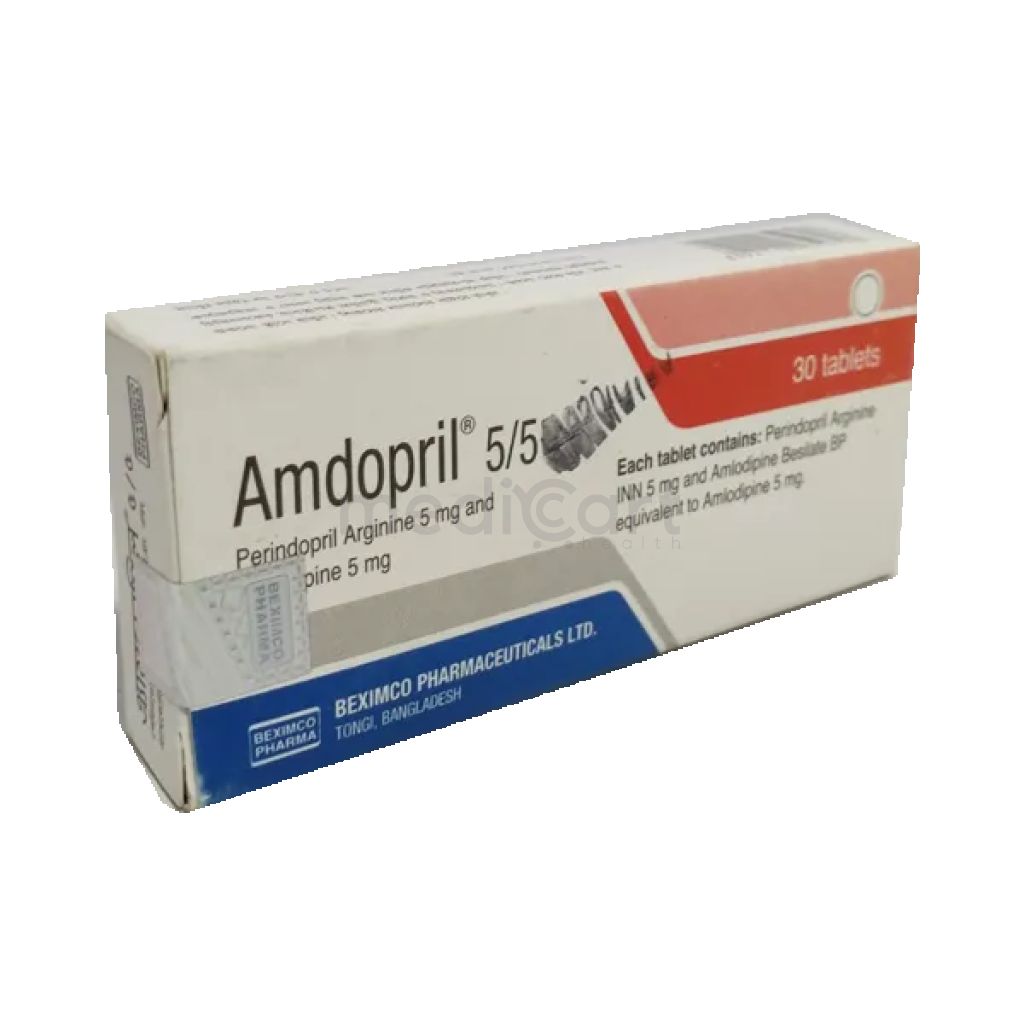

Amdopril 5/5 - 5 mg
Capsule
Pack Size :
10 Capsule x 1 Strip
Generics :
Amlodipine + Benazepril Hydrochloride
Manufacturer :
Beximco Pharmaceuticals Ltd.
Best Price *
TK
210.00
* Delivery will be done in Dhaka city only.
More Information About - Amdopril 5/5 - 5 mg
Description
Generic Name
Amlodipine + Benazepril HydrochloridePrecaution
Discontinue as soon as possible when pregnancy is detected; affects renin-angiotensin system, causing oligohydramnios, which may result in fetal injury and/or death. Caution in elderly, renal or hepatic impairment, congestive heart failure, severe aortic stenosis, unilateral or bilateral renal artery stenosis, use during surgery or anaesthesia. Amlodipine+Benazepril can cause symptomatic hypotension, especially in patients with salt/volume depletion. ACE inhibitors (ACEi) have been associated with cholestatic jaundice and fulminant hepatic necrosis; discontinue treatment if patient develops jaundice/marked elevation of liver enzymes. Monitor renal function and serum potassium periodically. Angioedema of the face, extremities, lips, tongue, glottis, larynx and intestinal angioedema have been reported in ACEi-treated patients. As with all ACEi, may cause persistent dry cough. Lactation: Minimal amounts of benazepril enters milk, but excretion of amlodipine is not known; not recommendedIndication
HypertensionContra Indication
Patients with history of angioedema; pregnancy, lactation.Dose
N/ASide Effect
>10% Amlodipine Peripheral edema (2-15%),Pulmonary edema (7-15%) 1-10% Amlodipine Abdominal pain (1.6%),Dizziness (1.1-3.4%),Dyspepsia (1-2%),Fatigue (4.5%),Flushing (0.7-2.6%),Headache (7.3%),Male sexual dysfunction (1-2%),Muscle cramps (1-2%),Nausea (2.9%),Palpitation (0.7-4.5%),Rash (1-2%),Somnolence (1-2%),Weakness (1-2%) Benazepril ARF if renal artery stenosis Cough (1-10%),Dizziness (4%),Fatigue (2%),Headache (6%),Nausea (1%),Postural dizziness (2%),Serum creatinine increased (2%),Somnolence (2%) Potentially Fatal: Analphylactoid reactions, angioedema, Stevens-Johnson syndrome.Pregnancy Category
Name : D
Description
There is positive evidence of human fetal risk based on adverse reaction data from investigational or marketing experience or studies in humans, but potential benefits may warrant use of the drug in pregnant women despite potential risks.Mode of Action
Amlodipine is a dihydropyridine calcium antagonist. It lowers BP by relaxing the coronary vascular smooth muscles and producing coronary vasodilation; through inhibition of transmembrane Ca ion influx into vascular smooth muscle and cardiac muscle. It is also a peripheral vascular vasodilator. Benazepril and its active metabolite benazeprilat inhibit ACE, which results in decreased plasma angiotensin II and thus leading to decreased aldosterone secretion.Interaction
Additive effect when used with catecholamine depleting drugs; monitor for hypotension and/or marked bradycardia. If used with clonidine, clonidine withdrawal should occur a few days after withdrawal of the beta-blocker to prevent rebound hypertension; if replacing clonidine by beta-blocker, beta-blocker should be introduced only after clonidine administration has stopped for several days. Concurrent use with prostaglandin synthase inhibiting drugs (e.g. indomethacin) may reduce the hypotensive effects of beta-blockers.Pregnancy Category Note
Pregnancy category: D Lactation: Minimal amounts of benazepril enters milk, but excretion of amlodipine is not known; not recommendedAdult Dose
Oral Hypertension Adult: Amlodipine component: 2.5-10 mg once daily; benazepril component: 10-40 mg once daily. Titrate dose gradually according to response. Elderly: Initiate with 2.5 mg Amlodipine component once daily. Hepatic impairment: Initiate with 2.5 mg Amlodipine component once daily. Titrate combination slowly in severe hepatic impairment.Child Dose
Safety and efficacy in paediatric patients have not been established.Renal Dose
Renal impairment: Decrease dose if CrCl <30 mL/min, severe liver impairment, or coadministered with diureticAdministration
May be taken with or without food.Disclaimer
The information provided herein are for informational purposes only and not intended to be a substitute for professional medical advice, diagnosis, or treatment. Please note that this information should not be treated as a replacement for physical medical consultation or advice. Great effort has been placed to provide accurate and comprehensive data. However, Medicart along with its authors and editors make no representations or warranties and specifically disclaim all liability for any medical information provided on the site. The absence of any information and/or warning to any drug shall not be considered and assumed as an implied assurance of the Company.






